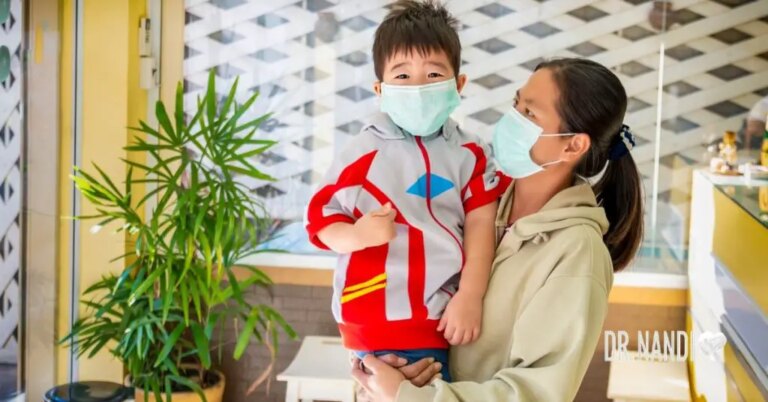Recent history has painfully shown how quickly a virus can transcend continents, disrupting lives, economies, and the very fabric of societies. The World Health Organization (WHO) continuously monitors and updates its list of priority pathogens—those notorious culprits with the potential to cause significant global health emergencies.
But why should we, as non-scientists, care about these pathogens? Because in the interconnected world of today, the ripple effect of a single outbreak can lead to widespread consequences that affect all of us—economically, socially, and health-wise. Here, we delve into the nature of pathogens, their impact through history, and the specific microbes that currently pose the highest risk.
Understanding WHO’s Priority Pathogen List
In the face of ever-evolving global health threats, the World Health Organization (WHO) released an updated list of priority pathogens, identifying more than 30 viruses and bacteria that pose the most significant risk of sparking the next pandemic. This critical list, which now includes such formidable names as influenza A virus, dengue virus, and monkeypox virus, serves as a roadmap for global health bodies to direct their research and development efforts toward the most urgent threats.
The recent expansion of the list, as detailed in a report released on July 30, 2024, marks a significant evolution from earlier editions, which highlighted around a dozen pathogens. This broadening to include entire families of viruses and bacteria—rather than individual names—shows a strategic shift toward a more holistic approach to pandemic preparedness. Each family of pathogens now includes “prototype pathogens” to focus on, which helps researchers develop diagnostics, treatments, and vaccines that can potentially be applicable to other similar pathogens.
Focusing on families of viruses, the list can address broader threats and adapt more dynamically to emerging challenges. This strategy is particularly crucial in a world where changes such as climate change, deforestation, urbanization, and increased international travel can dramatically alter the disease landscape.
The expanded list now includes 34 priority pathogens across 16 families and 30 prototype pathogens across 22 families, with an addition of 34 “pathogens X”—hypothetical threats that currently pose no risk but could potentially lead to pandemics under certain conditions. This methodical classification helps the global health community prepare not just for known diseases but also for the so-called “Disease X”—a term used to describe a hypothetical, unknown pathogen that could cause a future epidemic or pandemic.

The Pathogens You Should Be Aware Of
WHO’s watchlist, now more comprehensive than previous versions, categorizes 34 priority pathogens that span 16 families, highlighting the urgency for targeted research and preparedness measures.
High-Risk Pathogens of Concern
Among the newly emphasized pathogens, several stand out due to their historical impact and potential for future outbreaks:
- SARS-CoV-2 and Related Coronaviruses: This includes viruses within the Sarbecovirus subgenus, like those causing SARS and COVID-19, and Merbecovirus, which includes the MERS virus. These pathogens have already demonstrated their pandemic potential and continue to pose significant global health risks.
- Mpox Virus: Recently causing global concern due to outbreaks beyond its usual geographic confines in Central Africa, mpox (formerly known as monkeypox) is flagged for its capability to spread internationally.
- Influenza A Viruses: Several subtypes of this virus, such as subtype H5, have caused localized outbreaks and are known for their ability to mutate rapidly, potentially leading to more virulent strains.
Bacterial Threats and Prototype Pathogens:
- Plague Bacterium: Known for historical pandemics, the inclusion of the plague bacterium underscores ongoing vulnerabilities in global health defenses against bacterial pathogens.
- Prototype Pathogens: The WHO also identifies prototype pathogens within these families to spearhead the development of broad-spectrum diagnostics, treatments, and vaccines. This approach aims to enhance preparedness for related but lesser-known or emerging pathogens.
The pathogens listed are not confined to any single region. While the current list is extensive, it also serves as a reminder of the unpredictable nature of disease emergence. Pathogens not currently considered a major threat could evolve or be displaced by entirely new ones, as global conditions like climate change and urbanization alter how humans interact with the environment and wildlife.

Getting to Know Pathogens and Their Global Impact
When we think of pathogens—organisms like viruses, bacteria, and some fungi and parasites—we often picture them as villains of the microscopic world. These are the tiny critters responsible for diseases that can range from a mild cold to severe illnesses that can spread globally, creating pandemics.
Simply put, pathogens are any organisms that can make us sick. They’re incredibly diverse and are found virtually everywhere on Earth, from the ocean’s depths to the air we breathe. In fact, the number of viruses on our planet far exceeds the number of stars in the universe—imagine that!
While most microbes around us are harmless, and many are even beneficial, a small fraction can cause diseases. Pathogens can damage our bodies in different ways: some directly invade and destroy our cells, while others trick our immune system into overreacting, which can sometimes cause more harm than the infection itself.
Throughout history, pathogens have had profound impacts on societies. They’ve shaped the outcomes of wars, influenced the rise and fall of entire civilizations, and played pivotal roles in major historical events. For example, the fall of Athens in the Peloponnesian War was significantly influenced by a devastating plague, and the rapid conquests by European explorers in the Americas were aided by diseases like smallpox, which decimated the indigenous populations.
Even today, in an era dominated by chronic diseases like heart disease and diabetes, infectious diseases remain a major threat. Our highly connected world means that a disease outbreak in one part of the globe can quickly become a worldwide health crisis, as recently seen with the COVID-19 pandemic. This interconnectivity, combined with changes in how we interact with our environment, means new diseases can emerge and spread faster than ever.
My Personal RX: Your Role on Staying Healthy & Preventing the Next Pandemic
In our interconnected world, individual health choices can have far-reaching effects, impacting not just our personal well-being but also the health of our communities and beyond. As we navigate through an era where new health threats can emerge rapidly, it’s more important than ever to adopt practices that enhance our health and contribute to disease prevention. Whether it’s a common flu or a potential pandemic threat, the steps we take can significantly influence the course of health outcomes around the globe. Below are my key recommendations as a doctor that everyone can adopt to not only stay healthy but also play a crucial role in preventing the spread of infectious diseases.
- Stay Informed: Knowledge is your first line of defense. Stay updated with health advisories from reliable sources like the World Health Organization (WHO) and local health departments. Understanding which diseases are prevalent and knowing the symptoms can help you take prompt action if needed.
- Practice Good Hygiene: Simple habits like regular hand washing, using hand sanitizer when soap and water aren’t available, and covering your mouth and nose with a tissue or your elbow when coughing or sneezing can significantly reduce the spread of pathogens.
- Get Vaccinated: Vaccines are one of the most effective tools for preventing infectious diseases. Stay up to date with recommended vaccines, not just for your own health, but also to protect those in the community who are unable to get vaccinated due to medical reasons.
- Maintain a Healthy Lifestyle: A strong immune system starts with good health habits. Eat a balanced diet rich in fruits, vegetables, and whole grains; exercise regularly; get adequate sleep; and manage stress effectively. These practices not only boost your immune function but also improve your overall well-being.
- Travel Smart: When traveling, especially internationally, check travel advisories and receive any necessary vaccinations. Avoid areas known for outbreaks when possible, and always adhere to safety guidelines, including wearing masks and practicing physical distancing if required.
- Support Your Immune System: Maintaining a robust immune system is essential for fighting infections. Supplements that boost immune health can be a valuable part of your daily routine. Immune Support contains vitamins C and D, zinc, and other nutrients known to enhance immune response.
- Use Antibiotics Responsibly: Only use antibiotics when prescribed by a certified health professional and always complete the prescribed course. Misuse and overuse of antibiotics can lead to antibiotic resistance, making it harder to treat infections and control disease outbreaks.
- Stay Home When Sick: If you’re feeling unwell, especially with symptoms of an infectious disease, stay home from work or school to avoid spreading the illness to others. Seek medical advice if symptoms persist or worsen.
- Keep Your Environment Clean: Regularly clean and disinfect surfaces in your home and workspace, especially those that are frequently touched, such as door handles, mobile phones, and keyboards.
- Utilize the Protocol for Overall Health: My free 50-page Protocol provides a comprehensive guide to maintaining overall health through proper diet, exercise, and lifestyle habits. A healthy body can respond better to infections and recover more quickly, reducing the potential for widespread transmission.
Sources:
- Pathogens prioritization: a scientific framework for epidemic and pandemic research preparedness. (n.d.). https://www.who.int/publications/m/item/pathogens-prioritization-a-scientific-framework-for-epidemic-and-pandemic-research-preparedness
- Mallapaty, S. (2024). The pathogens that could spark the next pandemic. Nature, 632(8025), 488. https://doi.org/10.1038/d41586-024-02513-3
- What pathogen might spark the next pandemic? How scientists are preparing for ‘disease X.’ (2024, September 27). https://www.preventionweb.net/news/what-pathogen-might-spark-next-pandemic-how-scientists-are-preparing-disease-x
- Balloux, F., & Van Dorp, L. (2017). Q&A: What are pathogens, and what have they done to and for us? BMC Biology, 15(1). https://doi.org/10.1186/s12915-017-0433-z












 Subscribe to Ask Dr. Nandi YouTube Channel
Subscribe to Ask Dr. Nandi YouTube Channel










